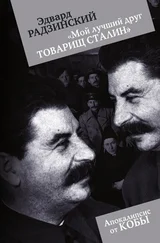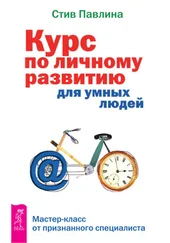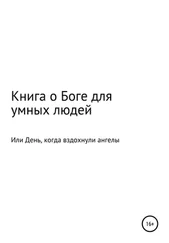22. Chen, W., Rosner, B., Hankinson, S. et al. (2011). Moderate alcohol consumption during adult life, drinking patterns, and breast cancer risk. JAMA , 306(17), pp.1884–1890.
23. World Cancer Research Fund, (2016). Cancer Prevention & Survival. Summary of global evidence on diet, weight, physical activity & what increases or decreases your risk of cancer. [online] London. Доступно по ссылке: http://www.wcrf.org/sites/default/fles/CUP-Summary-Report.pdf[Accessed 30 Oct. 2016].
24. О мифах о безопасном потреблении алкоголя на сайте ВОЗ: http://www.euro.who.int/ru/health-topics/disease-prevention/alcohol-use/data-and-statistics/q-and-a-how-can-i-drink-alcohol-safely.
25. Определение размера порции алкоголя. Источник: U.S. Department of Health and Human Services and U.S. Department of Agriculture. (2015). 2015 – 2020 Dietary Guidelines for Americans . 8th ed. Доступно по ссылке: http://health.gov/dietaryguidelines/2015/guidelines/. Информация о потреблении алкоголя: http://health.gov/dietaryguidelines/2015/guidelines/appendix-9/.
26. Эпизодическое употребление алкоголя в больших количествах в ЕС по данным ВОЗ: http://www.euro.who.int/ru/health-topics/disease-prevention/alcohol-use/data-and-statistics.
27. Roerecke, M. and Rehm, J. (2010). Irregular heavy drinking occasions and risk of ischemic heart disease: A systematic review and meta-analysis. American Journal of Epidemiology , 171(6), pp.633–644.
Глава 2. Зачем мы едим?
2.1
1. 2012 Food & Health Survey: Consumer Attitudes toward Food Safety, Nutrition and Health. (2012). [online] Исследование доступно по ссылке: http://www.foodinsight.org/2012_Food_Health_Survey_Consumer_Attitudes_toward_Food_Safety_Nutrition_and_Health. [Accessed 30 Oct. 2016].
2.2
2. Dietary Reference Intakes for Energy, Carbohydrate, Fiber, Fat, Fatty Acids, Cholesterol, Protein, and Amino Acids . (2002). Washington (DC): T e National Academies Press.
3. U.S. Department of Health and Human Services and U.S. Department of Agriculture. (2015). 2015 – 2020 Dietary Guidelines for Americans . 8th ed. Доступно по ссылке: http://health.gov/dietaryguidelines/2015/guidelines/.
4. Что такое физические нагрузки средней и высокой интенсивности? [online] Статья на сайте ВОЗ доступна по ссылке: http://www.who.int/dietphysicalactivity/physical_activity_intensity/ru/.
2.3
5. Sims, E. and Horton, E. (1968). Endocrine and metabolic adaptation to obesity and starvation. American Journal of Clinical Nutrition , 21(12), pp.1455–1470.
6. Harris, R. (1990). Role of set point theory in regulation of body weight. FASEB J. , 4(15), pp.3310–3318.
7. Vogels, N., Diepvens, K. and Westerterp-Plantenga, M. (2005). Predictors of long-term weight maintenance. Obesity Research , 13(12), pp.2162– 2168.
8. Rzehak, P., Meisinger, C., Woelke, G. et al. (2007). Weight change, weight cycling and mortality in the ERFORT Male Cohort Study. European Journal of Epidemiology , 22(10), pp.665–673.
2.4
9. Parker, J. and Bloom, S. (2012). Hypothalamic neuropeptides and the regulation of appetite. Neuropharmacology , 63(1), pp.18–30.
10. O’Rahilly, S. et al. (1997). Congenital leptin def ciency is associated with severe early-onset obesity in humans. Nature , 387(6636), pp.903–908.
11. Journel, M., Chaumontet, C., Darcel, N. et al. (2012). Brain responses to high-protein diets. Advances in Nutrition: An International Review Journal , 3(3), pp.322–329.
12. Page, K., Seo, D., Belfort-DeAguiar, R. et al. (2011). Circulating glucose levels modulate neural control of desire for high-calorie foods in humans. Journal of Clinical Investigation , 121(10), pp.4161–4169.
2.5
13. Siep, N., Roefs, A., Roebroeck, A., Havermans, R., Bonte, M. and Jansen, A. (2009). Hunger is the best spice: An fMRI study of the ef ects of attention, hunger and calorie content on food reward processing in the amygdala and orbitofrontal cortex. Behavioural Brain Research , 198(1), pp.149–158.
14. Berridge, K. (2006). T e debate over dopamine’s role in reward: T e case for incentive salience. Psychopharmacology , 191(3), pp.391–431.
15. Egecioglu, E., Skibicka, K., Hansson, C., Alvarez-Crespo, M., Friberg, P., Jerlhag, E., Engel, J. and Dickson, S. (2011). Hedonic and incentive signals for body weight control. Reviews in Endocrine and Metabolic Disorders , 12(3), pp.141–151.
16. Wang, G., Volkow, N., Logan, J. et al. (2001). Brain dopamine and obesity. T e Lancet , 357(9253), pp.354–357.
17. Davis, C., Curtis, C., Levitan, R. et al. (2011). Evidence that ‘food addiction’ is a valid phenotype of obesity. Appetite , 57(3), pp.711–717.
18. Johnson, P. and Kenny, P. (2010). Addiction-like reward dysfunction and compulsive eating in obese rats: role for dopamine D2 receptors. Nature Neuroscience , 13(5), pp.635–641.
2.6
19. Интервью с профессором Трейси Манн доступно по ссылке: http://newsroom.ucla.edu/releases/Dieting-Does-Not-Work-UCLA-Researchers-7832.
20. Mann, T., Tomiyama, A. and Westling, E. (2007) Medicare’s search for ef ective obesity treatments: diets are not the answer. American Psychologist , 62(3), pp.220-33. Полный текст доступен по ссылке: https://www.researchgate.net/publication/6359969_Medicare’s_Search_for_Efective_Obesity_Treatments_Diets_Are_Not_the_Answer.
21. Keys, A. (1950). T e biology of human starvation (2 Vols) . Minneapolis: University of Minnesota Press.
22. Herman, C. and Mack, D. (1975). Restrained and unrestrained eating. Journal of Personality , 43(4), pp.647–660.
23. Polivy, J. and Herman, C. (1985). Dieting and binging: A causal analysis. American Psychologist , 40(2), pp.193–201.
24. McFarlane, T., Polivy, J. and Herman, C. (1998). Ef ects of false weight feedback on mood, self-evaluation, and food intake in restrained and unrestrained eaters. Journal of Abnormal Psychology , 107(2), pp.312–318.
25. Pelchat, M., Johnson, A., Chan, R. et al. (2004). Images of desire: food-craving activation during fMRI. NeuroImage , 23(4), pp.1486–1493.
26. Polivy, J. and Herman, C. (2002). If at f rst you don’t succeed: False hopes of self-change. American Psychologist , 57(9), pp.677–689.
Глава 3. Еда и эмоции
3.1
1. Больше о неконтролируемом стрессе можно узнать на сайте «Постнаука» по ссылке: https://postnauka.ru/faq/26597.
2. Oliver, G., Wardle, J. and Gibson, E. (2000). Stress and food choice: A laboratory study. Psychosomatic Medicine , 62(6), pp.853–865.
3. Kash, T., Nobis, W., Matthews, R. and Winder, D. (2008). Dopamine enhances fast excitatory synaptic transmission in the extended amygdala by a CRF-R1-dependent process. Journal of Neuroscience , 28(51), pp.13856–13865.
4. Франкл, В. Сказать жизни «Да!»: психолог в концлагере . / Виктор Франкл; пер. с нем. – М.: Альпина Нон-фикшн, (2009).
Читать дальше
Конец ознакомительного отрывка
Купить книгу












